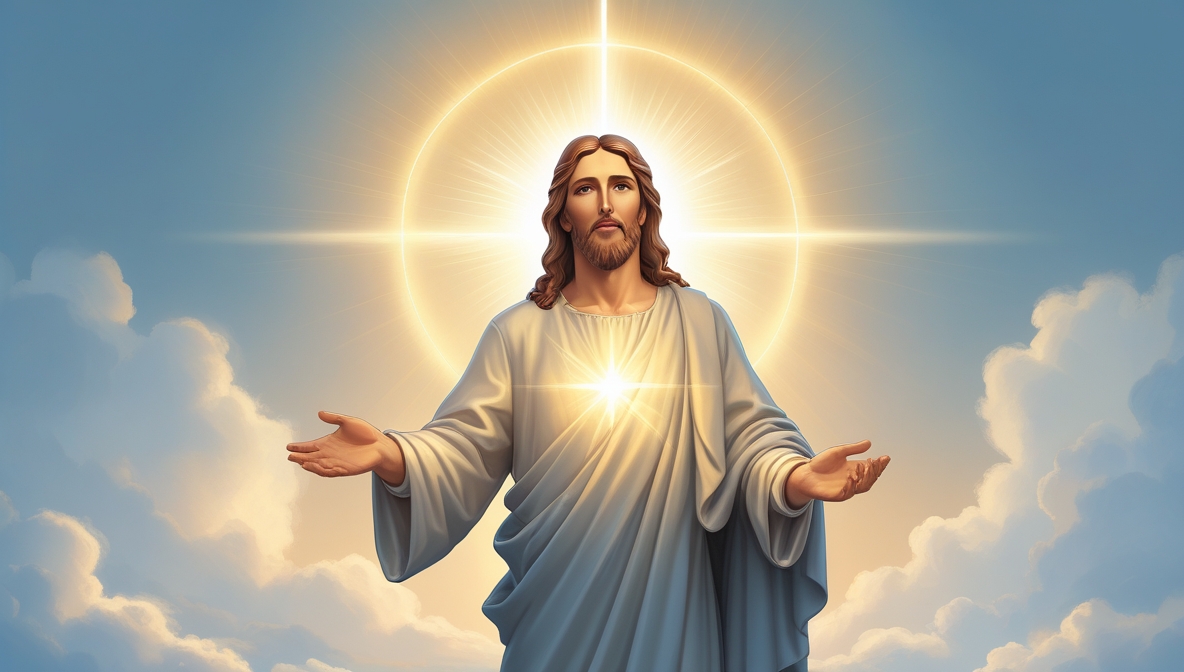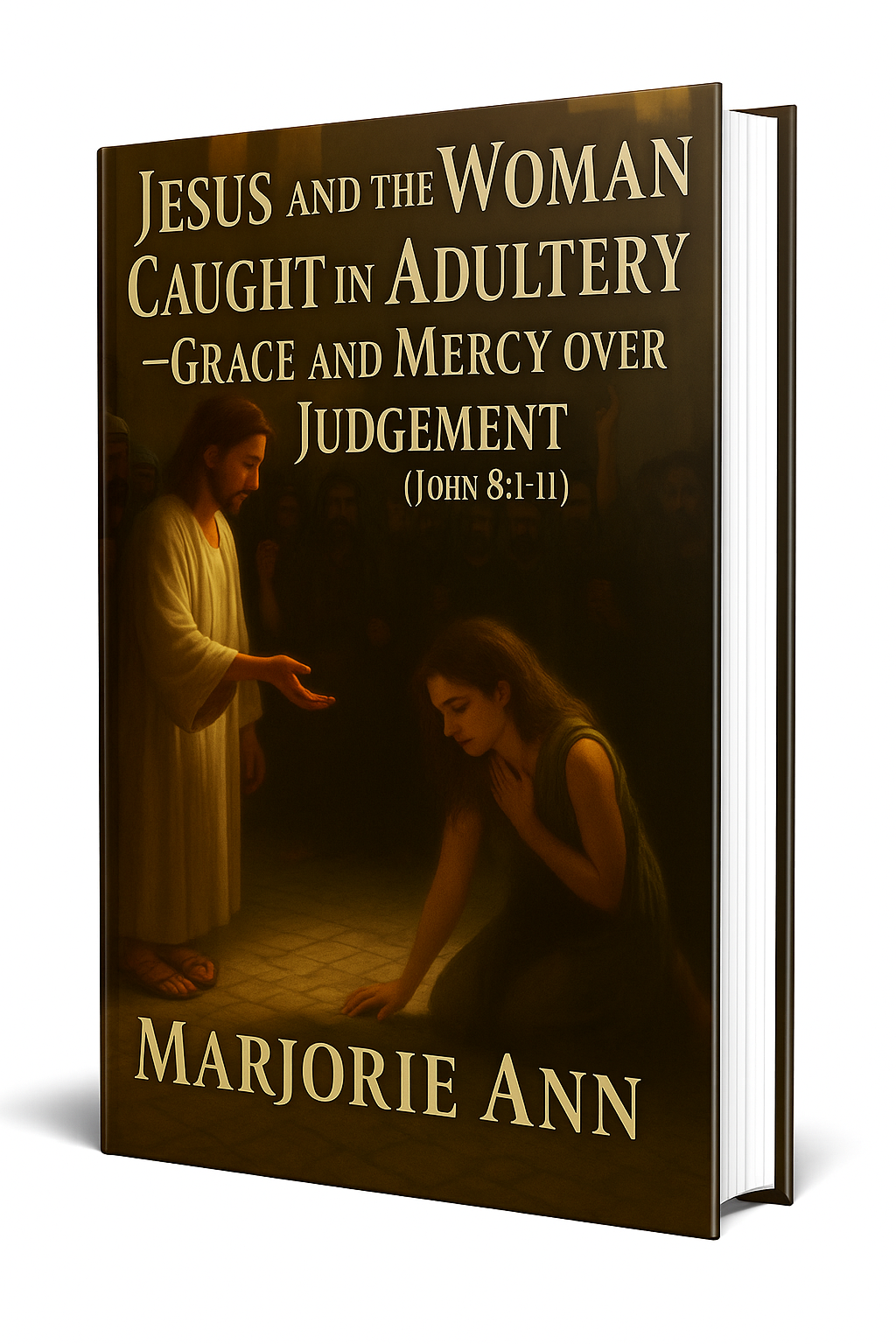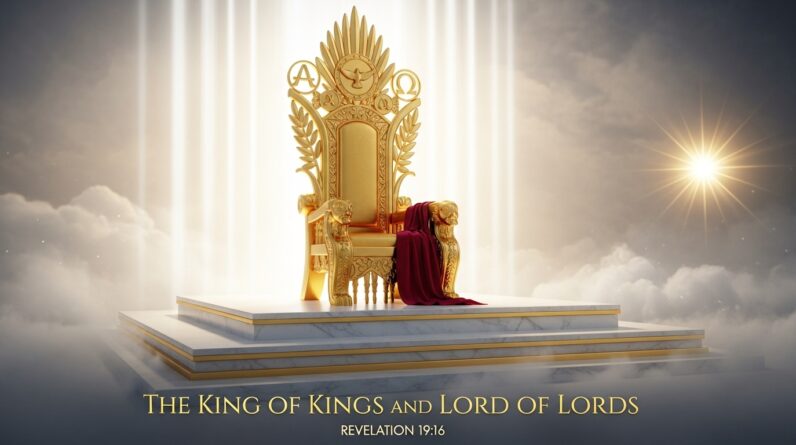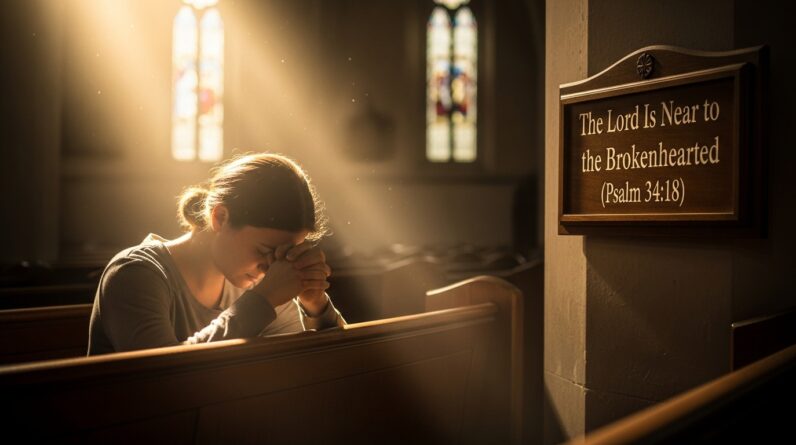The Light Of The World (John 8:12)
You know that moment when you walk into a dark room and flip a switch? Everything changes. Shadows retreat, colors pop, and you can finally see what’s been there all along. That’s the kind of transformation Jesus describes in John 8:12 when He says, “I am the light of the world.” John 8:12. When you study “The Light of the World sermon,” you’re exploring more than a metaphor — you’re engaging with the reality that Jesus brings clarity, hope, and life into the places where darkness rules.
In this article, you’ll unpack the meaning of “light” in Scripture, understand the cultural and historical context of Jesus’ statement, explore the theological implications, and gain practical help for applying this truth in your daily life. If you’re preparing a sermon, teaching, or simply reflecting on faith, you’ll find material and suggestions to guide your thinking and your practice.
Why “light” matters in the Bible
Light is a consistent image throughout Scripture. From the first words in Genesis to the closing vision in Revelation, God uses light to signify presence, purity, knowledge, and life. When you read John 1:4-9, you see the Logos (Word) described as life and light, a light that shines in the darkness and cannot be overcome. That continuity matters because it shows you’re dealing with a theme that shapes the whole biblical narrative, not just a single verse.
Considering light as symbolic language helps you see how Jesus is not merely one more teacher who uses bright imagery. He is the embodiment of the divine light that has been at work since creation. As such, the claim “I am the light of the world” is both theological and existential — it tells you who Jesus is and how you should live in response.
The historical context of John 8:12
To preach or understand “The Light of the World sermon,” you need to know where John 8:12 sits in the Gospel of John. The eighth chapter contains dialogues between Jesus and the Jewish leaders, and it’s situated within a broader set of “I am” statements (e.g., “I am the bread of life,” “I am the good shepherd”). Those statements are designed to reveal Jesus’ identity while inviting people into a relationship and obedience.
In the Jewish imagination, light carried strong messianic and prophetic associations. Isaiah had proclaimed that people walking in darkness saw a great light Isaiah 9:2, and the Psalmists often paired God’s presence with light and deliverance Psalm 27:1. When Jesus claims that title, He’s not being modest; He’s connecting Himself to those longings and claiming the role of God’s decisive revelation.
What John 8:12 actually says
Read the verse slowly: “When Jesus spoke again to the people, he said, ‘I am the light of the world. Whoever follows me will never walk in darkness, but will have the light of life.'” John 8:12. There are three key claims here:
- Jesus identifies Himself as the light of the world.
- Following Jesus leads you out of darkness.
- Following Jesus gives you “the light of life,” a phrase rich with existential promise.
Each clause offers a hook for your faith: identity, direction, and destiny.
Light versus darkness: more than a moral dualism
When you explore “The Light of the World sermon,” be careful not to reduce light to merely moral behavior versus darkness as bad choices. Yes, Scripture uses moral categories, but Biblical darkness often acts as a stand-in for brokenness, ignorance, spiritual death, and separation from God. John explores this theme elsewhere: “The light shines in the darkness, and the darkness has not overcome it” John 1:5. That phrasing tells you that light and darkness are in conflict, but also that the light has the decisive advantage.
This isn’t an abstract cosmic duel; it’s your lived reality. When you walk in darkness — whether that’s despair, confusion, guilt, or confusion about God — you’re limited. The light Jesus offers brings clarity, hope, reconciliation, and a path forward. You’re invited not only to know the truth but to be transformed by it.
The character of Jesus as Light
Understanding Jesus as light affects how you see His character. Light offers illumination, warmth, and visibility. In Scripture, these attributes translate into Jesus’ role as revealer (He reveals God’s truth), sustainer (He brings life), and judge (He exposes what is hidden). John 12:46 expands on the theme: “I have come into the world as a light, so that no one who believes in me should stay in darkness.” John 12:46. Notice the pastoral urgency — Jesus came with purpose, not merely symbolism.
When you preach or meditate on this, emphasize that Christ’s light is personal and active. It’s not a distant philosophical concept. It reaches out and changes lives.
Light brings knowledge and truth
One of the most important effects of light is that it reveals. Jesus, as light, is the revelation of God’s truth and character. In John 14 and 16, Jesus speaks about the Spirit who will guide you into all truth. The light principle intersects with this promise: to follow Jesus is to be taught, guided, and transformed by truth.
You see this in John 3:19-21: people love darkness because their deeds are evil, but those who live by truth come into the light so that their deeds may be exposed as done in God. John 3:19-21. That doesn’t mean the light condemns for its own sake; rather, the light exposes what separates you from God so healing can occur.

Eternal life and the light of life
John connects light with life again and again. In John 1:4, “In him was life, and that life was the light of men.” John 1:4. When Jesus promises “the light of life” in John 8:12, He’s linking illumination with the deepest human need: being alive in the fullest sense. Eternal life in John is not just endless time; it is a quality of life in relationship with God. Light, then, is a kind of life-giving presence.
If you’re preparing a sermon, highlight that the transformation from darkness to light is not cosmetic. It reaches into your identity and destiny. You don’t just change behavior; you enter into the life that God intended.
Old Testament echoes that deepen the claim
Jesus’ language also resonates with the prophets. Isaiah’s promise that “the people walking in darkness have seen a great light” (Isaiah 9:2) Isaiah 9:2 becomes a backdrop for Jesus’ declaration. The prophets often linked light with deliverance, guidance, and the presence of God. So when Jesus claims to be the light of the world, He’s linking Himself to the fulfillment of those prophetic hopes.
The Psalms also sing of God as light and deliverer: “The LORD is my light and my salvation—whom shall I fear?” Psalm 27:1. These echoes matter because they show continuity across Scripture — the same God who led Israel out of darkness is now present in Jesus.
Living as people of the light
If Christ is the light, then those who follow Him are called to reflect His light. Jesus tells His followers, “You are the light of the world” in Matthew 5:14 Matthew 5:14. That’s a direct implication of John’s claim: the light that saves you also mobilizes you to be visible and sacrificial. Living as people of the light means living transparently, lovingly, and truthfully in ways that draw others toward God.
Ephesians expands this by urging believers to live as “children of light” and to “have nothing to do with the fruitless deeds of darkness.” Ephesians 5:8-11. So you are not just lighting your path; you’re lighting the paths of those around you.
Practical consequences for daily life
When you internalize the reality that Jesus offers light, it should affect how you make choices, how you handle fear, and how you relate to others. Practical consequences include:
- Seeking truth in prayer and Scripture so your decisions are informed by light.
- Confessing and repenting when hidden things come to light, because exposure leads to healing.
- Engaging your community with courage and transparency, modeling what it means to be a follower of Christ.
- Letting your hope in Christ displace despair, because light transforms how you see the future.
These aren’t platitudes. They’re practical disciplines that anchor you in the reality of Jesus’ life-giving illumination.
The Light of the World sermon: structure and approach
If you’re preparing “The Light of the World sermon,” here’s a straightforward structure you can use to shape your message effectively while keeping the congregation engaged.
- Introduce the image: Start with a relatable illustration about light (e.g., a power outage, a lighthouse, sunrise).
- Unpack the text: Read John 8:12 John 8:12 slowly and explain the three claims: identity, promise, and result.
- Connect to the bigger story: Show Old Testament and Johannine echoes like Isaiah 9:2 Isaiah 9:2 and John 1:4-9 John 1:4-9.
- Apply personally: Offer practical steps for walking in the light, with repentance and discipleship.
- Call to response: Invite people to accept Christ’s light or renew their commitment to reflect it.
When you build your sermon this way, you give people clarity about what you’re saying and a pathway to act on it.
Illustrations that stick
An effective “The Light of the World sermon” needs memorable illustrations. Stories help people translate theological claims into personal decisions. Use images like a lighthouse guiding ships through fog, a candle relit from another flame (symbolizing discipleship), or the experience of suddenly seeing after long darkness. Each illustration should reinforce one of the verse’s claims—identity, deliverance, or life.
You can also draw from testimonies in your community where individuals experienced transformation. Real-life examples of moving from addiction, despair, or confusion into a life shaped by Christ’s light will resonate deeply.
Light as hope in suffering
One of the most pastoral applications of “The Light of the World sermon” is the way light addresses suffering. Light does not always remove pain immediately, but it gives you perspective and company. The Apostle Paul writes about living as children of light amid darkness and suffering Ephesians 5:8. You can preach comfort here: Jesus’ presence brings meaning and hope, even when circumstances remain difficult.
This approach helps you avoid cheap optimism and instead offer a sober hope grounded in Christ’s life, death, and resurrection. The light points toward a future reality where pain is finally overcome, as Revelation envisions a city with no need for sun because God’s glory provides light Revelation 21:23-25.
Light and evangelism
Remember that light is inherently outward-facing. It reveals so others can see. In evangelism, the imagery is powerful: when you carry Christ’s light, your life becomes a witness. John 12:46 says Jesus came as a light so those who believe wouldn’t stay in darkness John 12:46. Your attractive witness — not flashy, but authentic — invites people into that same life.
Practical evangelistic moves include living transparently, telling your story of transformation, and being available to guide others toward Jesus. Light attracts and clarifies; your role is to be a faithful reflector of the source.
Common objections and pastoral responses
As you preach or teach, expect honest questions. Some will ask why God allows darkness if He is light. Others will struggle with the idea of judgment implied by light exposing hidden deeds. Respond pastorally:
- On suffering: Acknowledge mystery, affirm God’s presence, and point to Christ’s solidarity with suffering.
- On judgment: Explain that light exposes in order to heal and restore, not merely to condemn. John says that those who do evil avoid the light because they fear exposure; the issue is not God’s desire to punish but human resistance to repentance John 3:19-21.
- On exclusivity: Clarify that Jesus’ claim to be the light is inclusive in that it invites all to come; it’s exclusive in authority but generous in offer.
Handling objections with humility and Scripture builds trust and opens doors for genuine conversation.
Spiritual disciplines that help you walk in the light
Walking in the light requires habits. If you’re seeking to live under the banner of a “The Light of the World sermon,” consider these disciplines:
- Regular Bible reading so truth shapes your mind.
- Prayer that cultivates honesty and dependence.
- Confession and accountability that allow light to expose for healing.
- Service that reflects Christ’s warmth and compassion.
- Fellowship that mirrors the light in community.
These disciplines aren’t legalism; they’re means by which you encounter the Light and are shaped into likeness.
The role of the Holy Spirit
John’s Gospel and the rest of the New Testament emphasize the Spirit’s role in illuminating truth. Jesus promised that the Spirit would guide you into all truth (John 16:13) John 16:13. When you preach or teach “The Light of the World sermon,” underscore that spiritual sight is a gift. You don’t merely grit your teeth and try harder; you ask the Spirit to open eyes and hearts.
Relying on the Spirit keeps you from turning light into mere information. The Spirit bears fruit, convicts, and leads you into obedience — all ways in which the light becomes lived reality.
The cosmic scope: Light of the world, not just your world
Jesus calls Himself the light “of the world” — not just of a village or a nation. That scope implies universal significance. The Gospel is meant for all peoples and cultures. John 3:16 demonstrates this universality: God loved the world so much that He gave His Son John 3:16. The light penetrates cultural darkness, systemic injustice, and personal despair.
This global perspective should expand your prayer life and mission: you care about the nations, you support global missions, and you see cultural engagement as part of shining Christ’s light into broader darkness.
The ultimate fulfillment: Revelation’s final vision
John’s Gospel points forward to a final reality where light is perfected. Revelation pictures a new city where God’s glory illuminates everything, and there’s no night Revelation 21:23-25. That ultimate fulfillment assures you that the light’s victory is real and permanent. When you preach “The Light of the World sermon,” it’s powerful to connect present experience with future hope; it lets people live now in the anticipation of full restoration.
Preparing to preach: practical tips for delivery
If you’re delivering a “The Light of the World sermon,” consider pacing, imagery, and invitation. Use contrast — darkness to light — to help listeners feel the difference. Keep the message pastoral and practical. Invite response with clear next steps: prayer, confession, baptism, or joining a discipleship group. Include Scripture citations in your slides or handouts so listeners can follow up, such as John 8:12, John 1:4-9, and Matthew 5:14.
Make room for silence after the invitation — people often need time to respond inwardly or to speak with someone after the service.
Reflective questions for personal or group study
Use these questions to help your congregation or small group think through the implications of Jesus as light:
- Where do you sense darkness in your life right now?
- What does it mean for you to “follow” Jesus practically this week?
- How is your life reflecting Christ’s light to others?
- What specific steps can you take to walk more fully in the light?
These questions make your sermon actionable and help people translate theological truth into real life.
Final encouragement: living in the light daily
You don’t have to wait for a perfect moment to step into the light. Jesus stands at the cusp of your darkness already. As John assures you, the light shines and the darkness cannot overcome it John 1:5. When you accept His claim, you begin to experience the transformation He promises: clearer vision, renewed purpose, and life that echoes into eternity.
The “The Light of the World sermon” invites you to witness, to follow, and to become a mirror of that light for others. Let the reality of Jesus’ presence change how you see yourself, how you relate to others, and how you hope for the future.
Key takeaways
- Jesus’ statement in John 8:12 John 8:12 is a bold claim linking Him to divine revelation, life, and salvation.
- Light in Scripture represents presence, truth, and life, and runs from Genesis to Revelation John 1:4-9, Revelation 21:23-25.
- Following Jesus calls you out of darkness into community, conviction, and mission, shown in passages like Matthew 5:14 Matthew 5:14 and Ephesians 5:8 Ephesians 5:8.
- Practical steps include prayer, Scripture, confession, service, and discipleship, all assisted by the Spirit’s guidance John 16:13.
If you’ve been sitting in a kind of spiritual darkness or you simply want to deepen the way you reflect Christ’s light, start with small, faithful steps. Read the Gospels, invite the Spirit’s illumination, and take one tangible action this week to reflect Jesus’ light to someone else.
Explore More
For further reading and encouragement, check out these posts:
👉 7 Bible Verses About Faith in Hard Times
👉 Job’s Faith: What We Can Learn From His Trials
👉 How To Trust God When Everything Falls Apart
👉 Why God Allows Suffering – A Biblical Perspective
👉 Faith Over Fear: How To Stand Strong In Uncertain Seasons
👉 How To Encourage Someone Struggling With Their Faith
👉 5 Prayers for Strength When You’re Feeling Weak

📘 Jesus and the Woman Caught in Adultery – Grace and Mercy Over Judgement
A powerful retelling of John 8:1-11. This book brings to life the depth of forgiveness, mercy, and God’s unwavering love.
👉 Check it now on Amazon 🛒💥
🔥 “Every great message deserves a home online.” 🌍💬🏡
Don’t let your calling stay hidden. Start a Christian blog or website using Hostinger — with 99.9% uptime, a free domain, and SSL, your voice can shine for God’s glory anytime, anywhere.
💥 Begin today. 🛒 Try it RISK-FREE! ✅
✝️ “Your body is God’s temple — care for it with purpose.” 💪💖🏛️
Renew your energy and restore balance naturally. Mitolyn helps support a healthy metabolism, giving you the vitality to live out God’s calling with strength and confidence.
🔥 Unlock Your Metabolic Power! ⚡Burn More Calories & Feel Great With Mitolyn. 💪
👉 Start Today. 🚀 Check Price Now. 🛒💰
💰 As a ClickBank & Amazon Affiliate, I earn from qualifying purchases.
📖 Acknowledgment: All Bible verses referenced in this article were accessed via Bible Gateway (or Bible Hub).
🚀 Want to explore more? 👉 Dive into our new post on Why Jesus? and experience the 🔥 life-changing truth of the Gospel!








